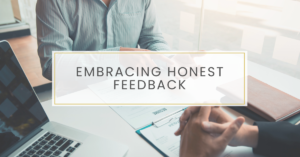In our rapidly changing world, the need for sustainable solutions has never been more urgent. Companies around the world are always trying to create this “green perspective” to their products and services.
The traditional linear economy, characterized by a “take-make-waste” model, is no longer viable in the face of resource depletion, environmental degradation, and climate change.
It’s time to embrace a new approach that not only minimizes waste and environmental impact but also fosters economic growth and resilience.
Is Circular Economy a Solution?
We take materials from the Earth, make products from them, and eventually discard them as waste in our current economy. As opposed to a linear economy, a circular economy prevents waste from being produced.
Welcome to the world of the circular economy, a transformative concept that aims to close the loop, regenerate resources, and create a sustainable future.
The circular economy represents a paradigm shift in producing, consuming, and managing resources.
Rather than the linear approach, it envisions a closed-loop system where resources are utilized efficiently, waste is minimized, and materials are continuously reused, repurposed, or recycled.
It’s an innovative and holistic approach that rethinks traditional business models, promotes collaboration across sectors, and encourages adopting sustainable practices throughout the value chain.
What Is the Circular Economy?
At its core, a circular economy is a regenerative system that aims to minimize waste and maximize the use of resources throughout its lifecycle. It is guided by several key principles:
Design for Circularity: Products and systems are designed with the intention of being reused, repaired, or recycled. This involves considering the entire lifecycle of a product, from material sourcing to end-of-life management.
Preserve and Extend Product Value: The goal is to keep products and materials in use for as long as possible. This can be achieved through practices like refurbishment, remanufacturing, and sharing or renting items.
Prioritize Resource Efficiency: Resources are used efficiently, reducing waste and ensuring their longevity. This involves strategies like optimizing production processes, using renewable materials and implementing energy-efficient technologies.
Embrace Renewable Energy: The circular economy promotes the adoption of renewable energy sources to power operations and reduces reliance on fossil fuels, thereby mitigating environmental impacts.
Close Material Loops: Instead of discarding materials, the circular economy seeks to recover and recycle them to create new products or regenerate resources. This includes promoting recycling infrastructure, establishing reverse supply chains, and encouraging responsible waste management practices.
Foster Collaboration and Innovation: Collaboration among stakeholders is essential for a successful circular economy. This includes partnerships between businesses, governments, consumers, and research institutions to drive innovation, share knowledge, and overcome systemic challenges.
In practice, a circular economy involves rethinking traditional linear models and transitioning towards a more sustainable and regenerative approach.
It requires systemic changes across industries, policies that support circularity, and a shift in consumer behavior towards sustainable consumption and responsible disposal.
By adopting circular economy principles, businesses and societies can reduce waste, conserve resources, minimize environmental impact, and create economic opportunities.
It offers a pathway towards a more sustainable and resilient future, addressing pressing environmental challenges while promoting long-term prosperity.
Which Type of Business?
Numerous industries are already embracing the principles of the circular economy. Some notable examples include:
Fashion and Apparel: Companies are implementing circular practices through clothing rental, upcycling, and recycling initiatives.
Automotive: The automotive industry is focused on reducing waste through remanufacturing, recycling of vehicle components, and transitioning to electric vehicles.
Food and Agriculture: Efforts are being made to reduce food waste, promote sustainable farming practices, and establish circular systems for nutrient recycling.
Technology and Electronics: Electronics manufacturers are implementing take-back programs, refurbishment, and recycling initiatives to extend the lifespan of devices and recover valuable resources.
Construction and Building: The construction industry is exploring circular strategies such as modular construction, material reuse, and recycling to reduce waste and resource consumption.
Energy: Renewable energy sources, such as solar and wind, are key components of the circular economy, promoting a shift from fossil fuels and creating energy systems with minimal waste.
Packaging: Companies are adopting sustainable packaging solutions like compostable materials, reusable packaging, and innovative designs that promote recycling.
Retail and Consumer Goods: Brands are exploring circular business models like product-as-a-service, encouraging repair and reuse, and implementing take-back programs.
Waste Management: The waste management sector plays a crucial role in the circular economy, focusing on waste reduction, recycling, and resource recovery.
Tourism and Hospitality: Efforts are being made to implement sustainable tourism practices, including waste management, circular food systems, and eco-friendly infrastructure.
These industries showcase the diverse range of sectors actively embracing circular economy principles, highlighting the potential for widespread adoption and impact across the global economy.
In today’s rapidly evolving world, businesses face an array of challenges. One of the most pressing issues is the need for sustainable and responsible practices that go beyond short-term gains. This is where the concept of the circular economy emerges as a game-changer.
By embracing resource efficiency and minimizing waste, businesses can reduce costs associated with raw material extraction, production, and disposal. Additionally, the circular economy encourages innovation and the development of new business models, fostering a competitive edge in the marketplace. Educating businesses about these economic benefits is key to encouraging their participation and commitment to this transformative approach.
The transition to a circular economy cannot be achieved in isolation. Collaboration and networking among businesses, government entities, and stakeholders are essential to accelerate the pace of change.
In conclusion, the circular economy represents a transformative shift towards a more sustainable and regenerative model of production and consumption.
Embracing the principles of designing for circularity, preserving product value, prioritizing resource efficiency, embracing renewable energy, closing material loops, and fostering collaboration and innovation, industries and societies can pave the way for a better future.
The circular economy offers immense benefits, such as reducing waste, minimizing environmental impact, conserving resources, and creating new economic opportunities.
It challenges the traditional linear “take-make-waste” approach and encourages a holistic perspective that considers the entire lifecycle of products and resources.
To fully realize the potential of the circular economy, concerted efforts are needed from businesses, governments, consumers, and other stakeholders.
Collaboration, innovation, and policy support are crucial in driving the necessary systemic changes.
Ready to level up your content experience? Meet Reader: the game-changer you’ve been waiting for, organizing your reading and remembering what you read! Sign up now using my link and get 60 FREE days!
I am incredibly grateful that you have taken the time to read this post.
Do you want to get new content in your Email?
Check my main categories of content below:
- Agile
- Blog
- Book Notes
- Career
- Leadership
- Management
- Managing Yourself
- Productivity
- Project Management
- Technology
- Weekly Pulse
Navigate between the many topics covered in this website:
Agile Art Artificial Intelligence Blockchain Books Business Business Tales Career Coaching Communication Creativity Culture Cybersecurity Design DevOps Economy Emotional Intelligence Feedback Flow Focus Gaming Goals GPT Habits Health History Innovation Kanban Leadership Lean Life Managament Management Mentorship Metaverse Metrics Mindset Minimalism Motivation Negotiation Networking Neuroscience NFT Ownership Parenting Planning PMBOK PMI Politics Productivity Products Project Management Projects Pulse Readings Routines Scrum Self-Improvement Self-Management Sleep Startups Strategy Team Building Technology Time Management Volunteering Work
Do you want to check previous posts about Productivity and Self-Management? Check these from the last couple of weeks:
- Saying No Is a Superpower
- When Did We Stop Being Curious?
- Aligning Values and Ambitions: Building a Strong Career with Principles
- 5 Focus Killers and How to Conquer Them
- What Is Personal Branding and Why Is it Important?
Support my work by sharing my content with your network using the sharing buttons below.
Want to show your support tangibly? A virtual coffee is a small but nice way to show your appreciation and give me the extra energy to keep crafting valuable content! Pay me a coffee:





